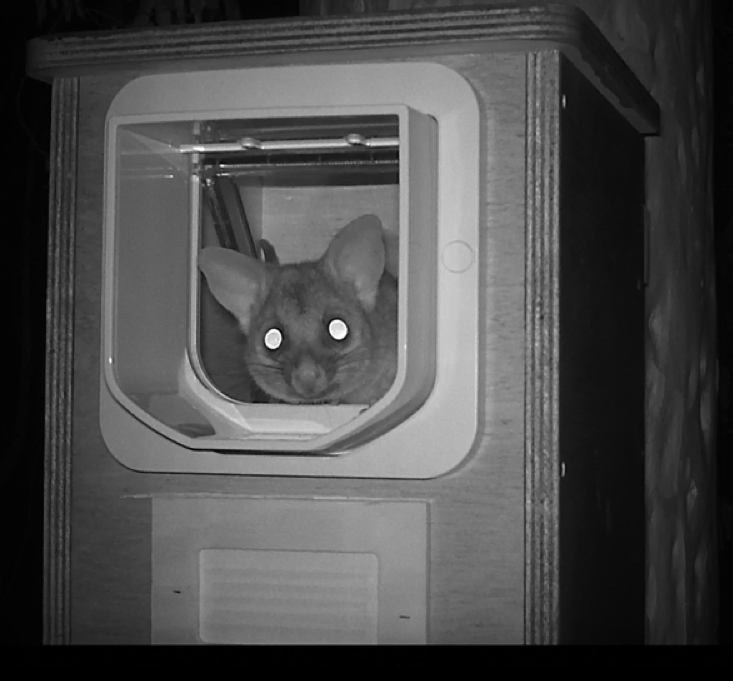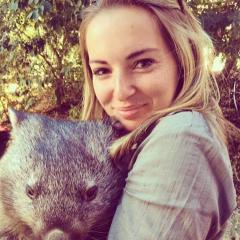Background
Australia’s high extinction rate can be attributed to a number of factors such as predation, habitat loss and fragmentation as well as competition (Johnson & Isaac 2009; Ramalho et al. 2014; Charter et al. 2016). These factors have led to a major decline in species abundance and distribution Australia-wide. For example, the common brushtail possum (Trichosurus vulpecula), has been reduced to less than half of its original range since European settlement (Kerle et al. 1992). Providing safe havens and critical resources for species survival will play an important role in conserving Australia’s unique fauna.
Microchip-automated technology has the potential to assist with reducing predation, mitigation of habitat loss and competition for resources. Microchip-automated technology provides a means of providing supplementary food in nesting areas and safe havens inaccessible to predators. Microchip-automated doors installed on nest boxes allow microchipped animals access to these nest boxes. Animals of other species or even individuals of the same species without the correct microchip cannot access the resource. This individually targeted technology can be used by a wide range of threatened species for resource supplementation.
Aims
- Identify if common brushtail possums and brush-tailed phascogales can be trained to use microchip-automated doors attached to nest boxes in the wild
- Explore how training methods differ for individuals within a species and between species
- Identify the level of use of these nest boxes after training
Methodology
Common brushtail possums and brush-tailed phascogales are captured from the wild and brought to the Hidden Vale Wildlife Centre. At the centre, the animals are microchipped and fitted with a collar that has a VHF tag attached. Animals are also microchipped and registered to their own their own door which is only accessible by this individual. These doors are installed on the nest boxes to be placed out in the wild. The animals are tracked using VHF technology to identify den sights prior to installation of the nest boxes. Nest boxes are installed near each individuals’ major den site to increase the chance animals will approach the nest box. Animals are trained in three stages to sufficiently habituate the animals to the door. After completing training, the nest box is left in place for two weeks to identify if the animals will continue to use the nest box.

Expected outcomes
This research will be the first step in investigating the use of microchip-automated technology in the wild. If successful, it can assist in developing a method that can be altered and applied to a wide range of species. This will allow for targeted supplementation of resources such as protected nesting sites and food, which will directly increase the success of wildlife reintroductions.
References
Charter, M, Izhaki, I, Ben Mocha, Y & Kark, S 2016, 'Nest-site competition between invasive and native cavity nesting birds and its implication for conservation', Journal of Environmental Management, vol. 181, pp. 129-34.
Johnson, CN & Isaac, JL 2009, 'Body mass and extinction risk in Australian marsupials: The ‘Critical Weight Range’ revisited', Austral Ecology, vol. 34, no. 1, pp. 35-40.
Kerle, JA, Foulkes, JN, Kimber, RG & Papenfus, D 1992, 'The decline of the Brushtail Possum, Trichosurus vulpecula (Kerr 1798), in arid Australia', The Rangeland Journal, vol. 14, no. 2, pp. 10727.
Ramalho, C, Laliberte, E, Poot, P & Hobbs, R 2014, 'Complex effects of fragmentation on remnant woodland plant communities of a rapidly urbanizing biodiversity hotspot', Ecology, vol. 95, no. 9, pp. 2466.
Acknowledgements
Hidden Vale Wildlife Project Research Support Funding




